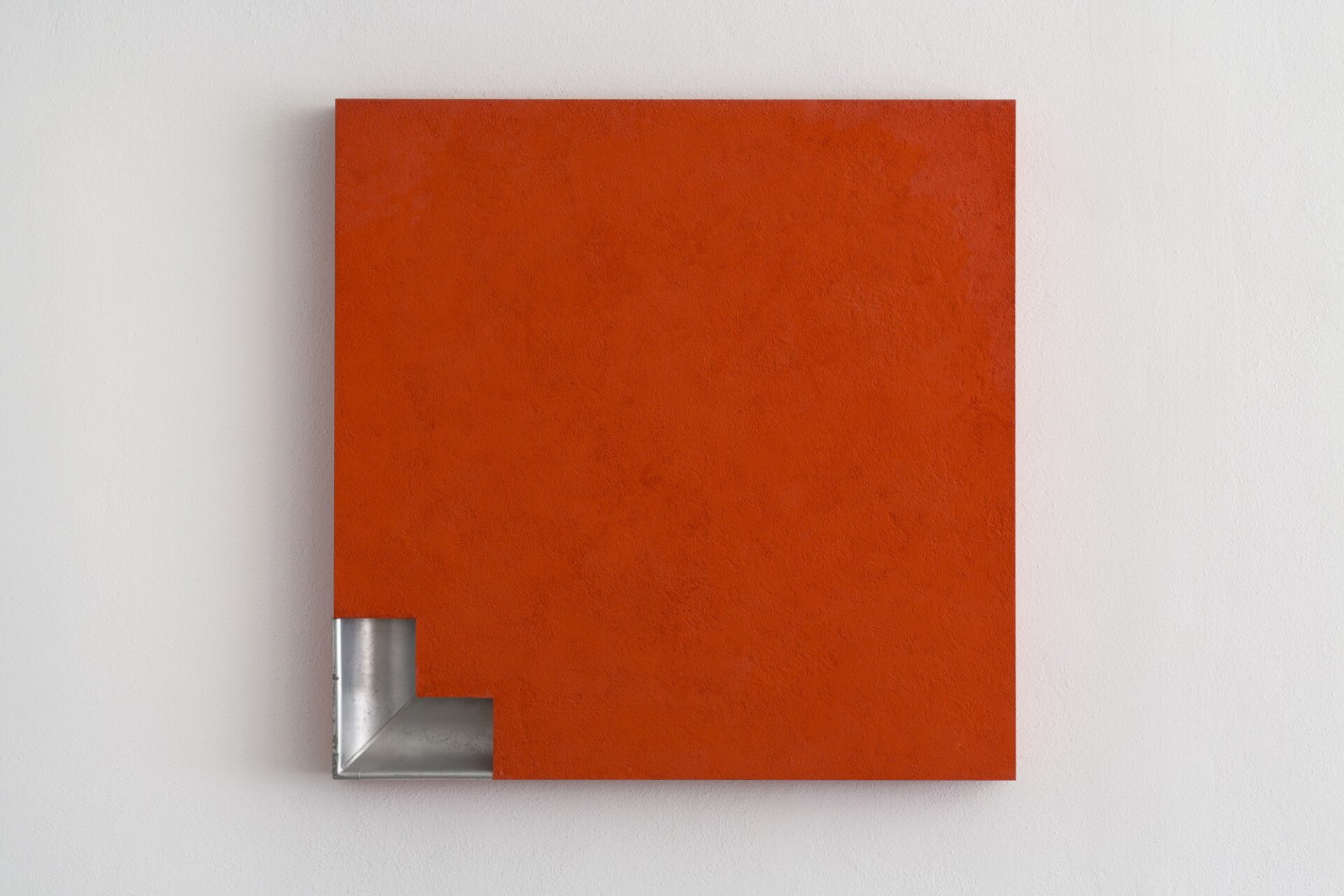The right-angled metal corner in this wall relief has a concave space that relates to the four-inch depth of the work’s projection from the wall. As in one of Donald Judd’s first works in three dimensions [untitled, 1962], this piece’s asymmetry is determined by the found object, “a given thing.”1
The metal corner is a section of a prefabricated aluminum gutter. Based on anecdotal evidence, it is believed that the gutter segment was recovered from one of the Artillery Sheds at the Chinati Foundation during its restoration in 1985. The depth of the curved gutter is two and three-quarter inches, and it is five and a half inches wide; each length of the gutter measures eleven inches from the corner.
“At the most general symmetry is the rule and asymmetry is the exception,” Judd wrote in 1985. “An artist or an architect can, of course, use both or use only asymmetry, but I long ago reached an agreement with what I consider the primary condition: art, for myself, and architecture, for everyone, should always be symmetrical except for a good reason.”2
